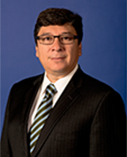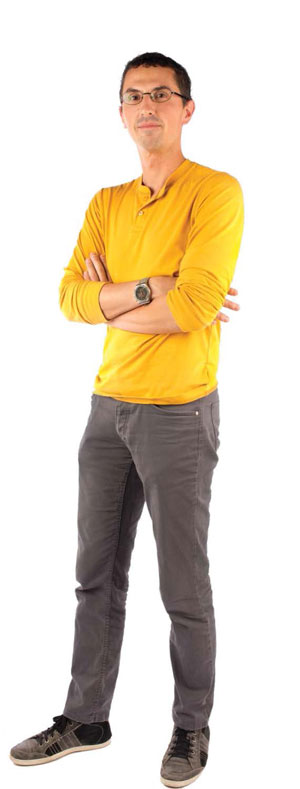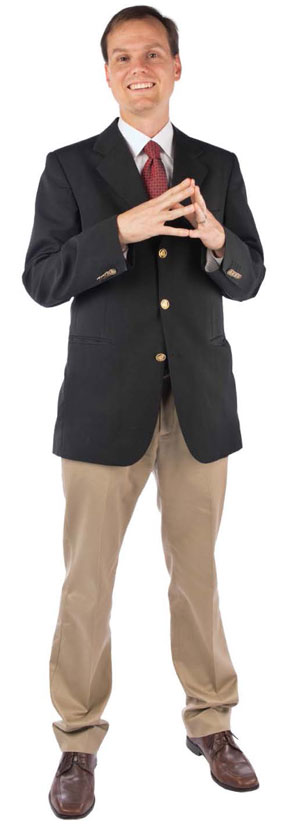
Photos by Patrick Ray Dunn
Honorable Quest
The 64 new faculty come from around the world and bring with them expertise that ranges from sports to smoking trends, literacy to play. Their research spans from why athletes sometimes choke under pressure to how phytochemical compounds in foods can prevent heart disease.
The faculty now inhabiting laboratories and lecture halls across the campus represent one of the largest incoming class of educators in the past decade. It’s a sign of things to come, said Provost John Frederick. Next year’s incoming freshman faculty class is expected to be as high as 50, as the university’s Tier One drive accelerates.
With the new faculty, a new career cycle begins, meaning that “the development of the next generation of university leadership has begun,” Frederick said.
It also means a larger knowledge base from which students can benefit, said President Ricardo Romo. With the new class, UTSA’s total number of faculty has reached more than 1,400.
“Our faculty members play a major role in ensuring that excellence and innovation thrive at UTSA and in San Antonio,” he said. “These expert scholars and researchers come from a variety of fields. Through teaching, research and community outreach, they will help us prepare strong leaders, which will ensure a strong future for our graduates and our city.”
Meet some of the new faculty:
Kimberly Fonzo | Nathern Okilwa | Matthew McCarter | Alexis Godet | Lucinda Nevarez | Rahman Azari | Marcio Giacomoni
Kimberly Fonzo
Assistant professor of English
There’s Alisoun, the wife of Bath, who proudly married and manipulated several men. Then there’s Judith, from the biblical story of a cunning yet saintly widow who slays a powerful man and saves her people. Procula, the wife of Pontius Pilate, and Joan of Arc are favorites.
But for Kimberly Fonzo, assistant professor of English, the magic and mystery of medieval literature isn’t so much about the characters, as scintillating as they may be.
“The authors themselves are the characters that compel me,” she said.
Fonzo, who is teaching an undergraduate course on early literature through 1700 and a graduate course on medieval literature, is so intrigued by writers from that period, especially Christine de Pizan, that she decided to dedicate her career to learning more about them and the techniques they use to represent themselves in their own stories.
Medieval literature is any written work from Europe and the surrounding area created during the Middle Ages, which was from roughly 500 to the late 1400s. While it spans an array of subjects, much of the work is rooted in religion.
Fonzo did not always appreciate the literature. As a college student, she was a strong critic because she saw it as more historical than literary. Then came an “aha moment” in an Indiana bookstore.
Fonzo, who is also an actress, was in Bloomington for a stage production. During a break, she wandered into a bookstore and picked up a book about de Pizan, an Italian-French author who lived from 1363 to 1430 and is perhaps best known for her work The Book of the City of Ladies.
“I spent that summer backstage reading the entire book,” she said. “I started noticing the way in which she used these prophetic female figures in her work. These women could see what men in power couldn’t see, and they seemed to reflect her identity as an author. I was fascinated.”
Fonzo’s passion was born.
“Medieval literature taught me to look at art on its own terms and suspend my judgment,” she said. “It’s like a mystery novel class in a way because you’re trying to trace the origins and history of ideas and to explore an unfamiliar kind of literature on its own terms.”
Students are often familiar with such period works as Beowulf, Geoffrey Chaucer’s The Canterbury Tales and Dante Alighieri’s The Divine Comedy. Yet there is much more to the genre than those familiar works, she stressed.
“If you are missing medieval literature, you’re missing nearly 1,000 years full of rich material,” she said. “There is something for everyone. There are Anglo- Saxon materials, a lot of which deal with religious subjects and also nation-building and relationships to the past. There’s the Arthurian literature, which is very humorous, with romantic tales, but they are also tales of valor. There are adaptations of Classical texts, texts about subversive spirituality, texts criticizing governments, pastoral texts about our relationship to the land.
“That’s a lot of literature to miss.”
Nathern Okilwa
Assistant professor of educational leadership and policy studies
When young Nathern Okilwa wasn’t working on a farm near his western Kenyan town, he was toiling away in school. Although his mother left school after fourth grade, she believed education was critical for her children.
Her son would go on to become the first in his family to earn a Ph.D.
“My mother believed education was a path to a better life,” he said. “This was practical advice because it was evident to me that an agrarian lifestyle did not hold much promise for the future.”
Okilwa, who received his Ph.D. from the University of Texas at Austin, is interested in helping disadvantaged children, including those from economically disadvantaged groups; racial, linguistic and cultural minorities; special education students; and recent immigrants, especially refugees. He wants to further explore how refugee students navigate and learn in a foreign environment and to understand how they survive and sometimes thrive, even with so few resources.
His personal, professional and educational experiences shaped his career path and research interests. When he was a student in Kenya, many of his classmates struggled financially. They couldn’t afford basic school supplies, uniforms or healthy meals.
Then he became a teacher and saw their struggles from another perspective.
“I know what it means to struggle to make life work,” he said. “Having had the fortune of teaching in different school contexts here in the U.S. as well as Kenya, I see the similarities and differences in the challenges of schooling for youth. I count myself fortunate to have made it through past obstacles to get to where I am today. Virtues that I acquired from my upbringing were hard work and resilience, and those, coupled with a measure of faith, always pay off.”
He feels a sense of obligation to disadvantaged children. Through his work, he wants to have a positive influence on their lives.
“I feel refugee students are the epitome of real struggle, and their stories have limited representation in public discourse or literature here in the U.S.,” he said, adding that the United States is the single-largest host country to refugees from around the world. Similarly, Kenya is a host country for many refugees facing political instability in neighboring countries.
“Some of the students in refugee camps in Kenya end up here in the U.S.,” he said. “I look forward to interacting with them and eventually telling their stories through my scholarly work. I hope I can trace their stories back to the refugee camps and, if possible, to their homeland. I believe connecting these dots will provide unique policy intersectionality between the U.S. and international contexts.”
Matthew McCarter
assistant professor of management
It was a jigsaw puzzle that pieced Matthew McCarter’s life together. Or, at least introduced what would become his field of study, his unique teaching style and a different approach to everyday negotiations.
Ironically, that puzzle was never completed.
When McCarter was an undergraduate at Brigham Young University, his class was given a simple task: break into groups and complete a jigsaw puzzle. Each group was given a different puzzle. Whichever team finished first and ran to the winner’s circle, which included an overhead projector, would win a bag of Snickers.
“Quickly we discovered we were all missing pieces and had incorrect pieces. We had to figure out how to cooperate with each other while at the same time compete against each other,” he said.
The class exercise failed.
The overhead projector light was stolen. Puzzle pieces were snatched from tables and nearly completed puzzles were deliberately knocked over.
More than 20 minutes after the class was to end, the instructor stopped the game with no winners.
“I was shocked at what happened,” McCarter said. “Everyone was doing what was best for themselves, and it resulted in the group doing poorly.”
He couldn’t stop thinking about it. After a sleepless night, with the advice of a professor, he decided to research what could have caused such aggressive behavior.
That’s when he discovered a book on social dilemmas, situations in which individual and group interests are at odds.
Suddenly, McCarter saw examples everywhere. Like the students who walked across delicate landscaping, each thinking they were the only ones to do so, but ultimately killing the grass from their sheer numbers. Or the group projects where one person inevitably does most of the work to get the job done while other group members shirk.
McCarter went on to write 15 journal articles on the subject of cooperation versus competition. He received his Ph.D. in business administration from the University of Illinois at Urbana–Champaign, and held the Wang-Fradkin Assistant Professorship in the Argyros School of Business and Economics at Chapman University prior to joining UTSA.
He continues to study conflict management with a focus on interdependent decision-making and collective action.
“I’m still fascinated by it,” he said. “I see it as a problem that we always have to fix.”
And the problem is everywhere, prevalent in churches, businesses and communities, and within families, he said.
“When people don’t have a monetary incentive to cooperate, we have to find some other way,” he said. “So I’m trying to find some other ways.”
This fall, McCarter is using approaches similar to the puzzle exercise to teach the same concepts in his own class.
“I believe the best way to learn management theory is to experience it or to witness someone else experiencing it,” he said. “Don’t just take my word for it. You just watched it happen. The students will never forget it.”
Alexis Godet
Assistant professor of Geological Sciences
How does a researcher study ocean sediments and coral reefs in landlocked Switzerland? The answer is simple for Alexis Godet, assistant professor of geological sciences.
“One hundred and twenty five million years ago, what is now the Alps was at the bottom of the ocean. I can now study ocean sediments on a mountain…from a blue world to a green world,” he said.
Back then, the Alps mountain range was nothing but the sandy floor of a watery world. Then the Eurasian and African tectonic plates at the ocean bottom started shifting and pushing against each other. The plates rose and after millions of years became the mountains that exist today.
As a geologist specializing in sedimentology and carbonates from the Early Cretaceous period, Godet is interested in ecosystems that have made this blue-to-green shift. He studies diagenesis, physical and chemical changes that occur while sediment converts to sedimentary rock.
Godet’s interest in the ocean began with coral reefs, which he observed on a scuba diving trip when he was 20. Then a professor taught him about sedimentology and inspired him to pursue graduate studies. That’s when he learned about the fragile nature of ecosystems.
Coral reefs are underwater structures formed from calcium carbonate secreted by corals, which are tiny animals that thrive in clear, shallow, sunny water. Although most of them are less than 10,000 years old, coral reefs are considered crucial to maintaining ecobalance, since they are hosts to the most diverse ecosystems on Earth. They are also fragile.
“Corals live on carbon dioxide in the air and water,” Godet said. “If you create crisis in the atmosphere with too much carbon dioxide, the coral won’t be able to keep up. They also are vulnerable to temperature change, which can destroy them if it’s too drastic.”
Godet will teach about the importance of maintaining ecobalance in the world.
“I want my students to understand that we don’t want coral reefs and associated ecosystems to go away,” he said, adding that throughout Earth’s history, there has been a lack of balance between ocean and atmosphere, yet ecosystems continue to adapt.
“We need to figure out how fast changes are occurring and determine how long it will take to recover.”
Lucinda Nevarez
Assistant professor of social work
Lucinda Nevarez still thinks about a young man she once helped at a Houston hospital. The man was diabetic, dependent on medicines he couldn’t afford. So he’d purposely go without until his body could no longer function. Blood transfusions were necessary. He’d go to the emergency room, get treated and released, then neglect his health until he became so sick that once again he’d return to the same emergency room for crisis care.
Then one day that hospital turned him away. It was a new policy, they said, and people who repeatedly used the emergency room for crisis care of treatable conditions would now be denied care.
That’s how he ended up at the hospital where Nevarez worked as a medical social worker. She arranged for him to be temporarily supported with medication, and he went on his way. Later, news came from her hospital administrators: the same policy would be enacted at her facility, and repeat patients would no longer be treated.
“After my interaction with him, I felt like if it was an issue that was so large that they had to start making a policy around it, there must be multiple people that are experiencing the same thing,” she said. “I just happened to come across one of them. It made me wonder what was happening to all the others.”
So she set about finding out. She began researching health disparities and the impact of discrimination in health care.
“Some people think of discrimination in terms of culture or race, but there is also discrimination based on economic status and gender, among others,” she said.
That’s a phenomenon that’s all too familiar to Nevarez. As a child, her sister was turned away from emergency care from the only hospital in the region because her family had an outstanding balance. The family had to drive more than an hour to another city to get treatment.
“I think that instilled a great interest in me in making sure all individuals can receive health care,” she said.
It also showed her what a difference community involvement could make. After being turned away for treatment, her parents returned to their South Texas small town and launched a successful campaign to bring a clinic to the county that would serve all patients, regardless of their ability to pay.
Neither of her parents were social workers, but Nevarez believes it is through their influence that she now focuses on the needs of individuals within their social environment.
“I really hope to make a difference in the community in some aspect and I hope to encourage as many students as possible to continue with their education,” she said. “I think sometimes when we’re researching, we can get so removed from the populations that we’re researching. But what I’ve already seen is that here at UTSA,
this is not just a population we’re studying. This is a population we’re serving.”
Rahman Azari
Assistant professor of architecture
Rahman Azari believes the best footprints left behind are small— environmentally speaking, that is. Azari is interested in ways to minimize the environmental burden of buildings and reducing the impact of construction on the world.
Azari, assistant professor of architecture, believes architecture today should aim at being self-sustained and carbon-neutral.
He hopes to instill in his students the importance of net-zero energy buildings, the buildings that produce as much energy as they consume. These buildings have lower environmental impacts than regular buildings.
“Sustainability shouldn’t be viewed as optional or a luxury,” Azari said. “A responsibility for architecture students is seeing environmental design as an essential goal of their design process.”
Throughout history, cultures from around the world adapted architectural techniques to fit to their surrounding climate and place. Thick adobe walls were used in some climates to keep buildings warmer in the winter and cooler in the summer. Higher ceilings in hotter climates kept heat above people’s heads, and transoms over the doors opened to aid air circulation. During warmer weather, occupants could also migrate to the cooler basement.
“In contemporary architecture, we can achieve self-reliance by incorporating more principles of traditional, old architecture in interaction with the environment, and at the same time, use modern technology,” he said. “Today, better insulation helps, but it’s not enough. Too often today, building equals energy consumption.”
Buildings are responsible for 75 percent of electricity consumption, and 40 percent of fossil-fuel energy consumption. It doesn’t have to be that way, he said.
People are sometimes aware of sustainability issues, but many are discouraged by the higher construction costs, he said. But green buildings will save their owners money in the long run with reduced utility rates, he stressed, adding that it’s a small price to help the planet.
“You must include energy-saving features like you would include windows,” he said. “Designers and architects should see it as their professional and ethical responsibility to leave a smaller footprint on the world.”
Marcio Giacomoni
assistant professor of Civil and Environmental Engineering
When aquifer levels are broadcast daily on the radio, you know that water is an integral part of people’s lives in that broadcast area, said Marcio Giacomoni, assistant professor in the Department of Civil and Environmental Engineering.
“There is a huge demand for water in South Texas, and with San Antonio experiencing so much growth, that demand is only going to increase in the future,” he said.
This is why understanding the region’s hydrology and the need to promote conservation efforts are so critical. Giacomoni’s research will focus on analyzing water resources systems, water resource management and planning, and the application of Geographic Information Systems and remote sensing to water resources and environmental engineering.
As an undergrad, Giacomoni thought about the practicality of becoming an engineer when considering what the job situation might be like a decade after graduation. He was also motivated by his sense of environmental consciousness.
He wanted to develop the skills to address the needs and problems associated with good water management techniques to help stretch the precious resource, he said.
“I appreciate nature a lot, and managing water resources has huge implications that have a direct impact on all aspects of life,” he added.
Giacomoni earned his undergraduate degree in Brasília, Brazil, and his M.S. in Porto Alegre, Brazil, at the Federal University of Rio Grande do Sul.
After receiving his Ph.D. at Texas A&M University, he secured his post at UTSA anxious to continue his water-related research at the height of the ongoing, years-long drought.
“I believe there are a great number of real success stories here in how San Antonio Water System has so efficiently promoted methods for conserving water,” he said. The city’s water utility uses a storage and recovery system that includes pumping water out of the Edwards Aquifer into the Carrizo-Wilcox Aquifer during non-drought years. That aquifer is used as an underground reservoir to significantly cut down on the amount of water lost to evaporation. When there is need, the reserved water is used to meet the demands from San Antonio.
Despite San Antonio’s heavy growth over the past decade, the total amount of water being pumped from the Edwards Aquifer, the metropolitan area’s main water source, remains about the same, he said.
The city’s water utility has also heavily promoted water conservation methods, such as the installation of high-efficiency, low-flow toilets.
But the drought, now in its third year, “is having a huge economic impact, and not just with the downstream rice farmers in Southeast Texas, who require huge amounts of water to grow their product,” he said. “It is critical that more and better conservation methods are developed if growth is to continue.”
Web Extra
Other New Faculty Members
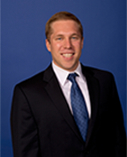
Bryan Gervais
Political Science
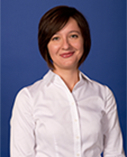
Dina Krasikova
Management
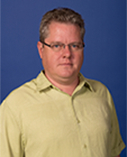
John Sutterby
Interdisciplinary Learning and Teaching
